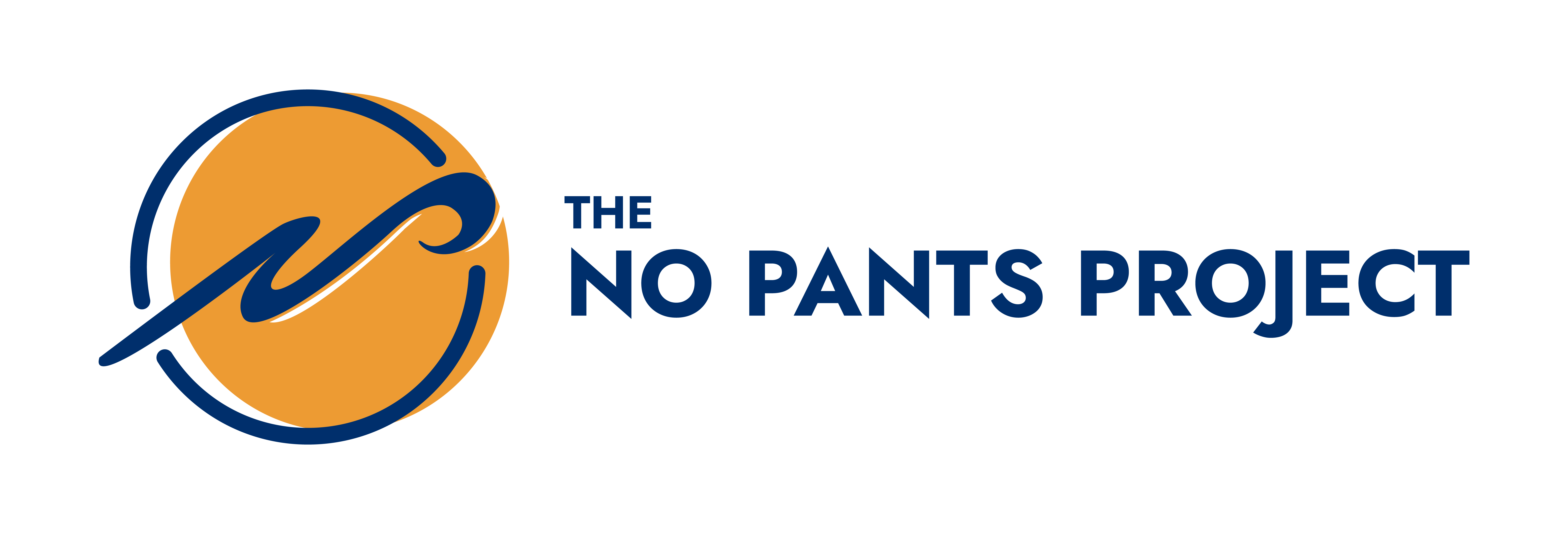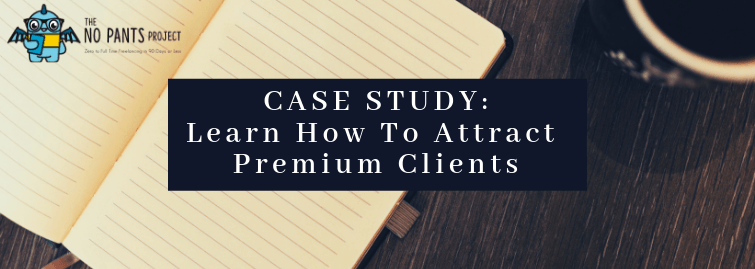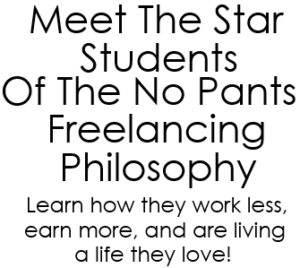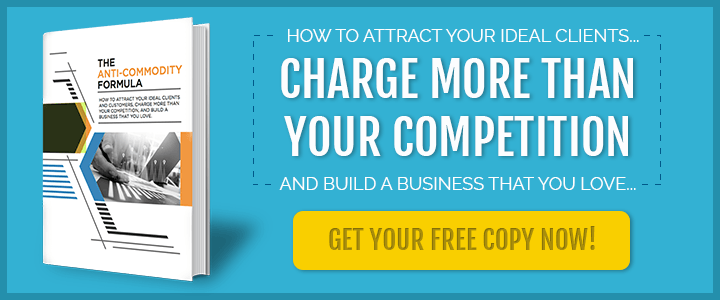As a new freelancer, you need clients fast and cash flow now.
You already know that bidding for jobs on freelancing job boards is a fast-track to the bottom of the barrel and a serious case of burnout.
You don’t have time or money to pour into long-term, passive strategies for client attraction.

So you do some old-fashioned door-knocking — of the virtual variety.
Typically referred to as “cold emailing,” this means actively going out into the interwebs, tracking down some people you think you want to work with, and straight up asking if they want to work with a complete stranger.
This may not be the easiest method of client-getting, but it is the best way we know to get out there and get some work quickly, on your own terms, and on the cheap.
And even better, it works at any stage of your freelancing career, so long as you’re able to get it right.
If you’ve given cold-emailing a shot and haven’t found any success, chances are you just need a little more guidance and some good examples.
To help you get on the successful side of the cold emailing spectrum, we’ve rounded up 13 experts who will help you understand and perfect the seven critical elements of cold emails.
1. Qualifying Your Leads
The most critical element of successful cold emails takes place before you even start writing — making sure you’re sending emails to the right people.

Vukasin Vukosavljevic, marketing manager for Shyft, writes,
“Winning outreach starts with qualifying your leads first, segmenting them down and coming up with a win-win solution.”
That means knowing who you’re talking to well enough to understand what problems they care about most.
When you get this right, you cut straight to providing value by offering your approach to solving those particular problems.
One way of doing this might be to decide on not only a single niche, but also a particular company size and title that you are going to reach out to.
This way, you know you’re talking only to leads with the same set of problems, which allows you to spend more time personalizing and analyzing results to figure out if this is a viable market for your services.
You also don’t waste time sending solutions to the inboxes of people who have no interest in your services, no matter how good the cold email is.
2. The Subject Line

(Source: LinkedIn.com)
“Imagine walking down the street as someone approaches with a giant grin and says, “”Hi [FirstName]! I’m so happy to see you!””
How would most people respond?
The response depends entirely on what sort of relationship these two people have.
The grinning speaker could be a close friend, a blast from the past or a total psycho. Same message, same delivery, vastly different results based on what’s gone before.
That’s exactly how potential customers react when they receive a cold email,” Julia Manoukian, content marketing manager at Limelight Platform, writes.
This is why getting the subject line of your cold email is so important.
You’ve only got one opportunity to get past your lead’s natural defense and suspicion of new and unexpected visitors to their inbox.
How do you do it?

(Source: LinkedIn.com)
Baylor Cherry, marketing specialist for BluLeadz, suggests:
“Your email subject lines should read like they are written from one person to another. Personalizing your message is an effective principle. Think about an email that you would want to open. Wouldn’t you be more enticed to open it if it appeared personal and customized just for you?
Be sure to avoid fancy, formatted emails full of marketing speak and industry jargon. It’s not a newsletter. Keep it simple!
Avoid cute or catchy slogans as well. While it fits the “mold” of a business email, or at least what people perceive as a business email, if you want to get your emails opened and read, avoid it! You don’t want to seem stuffy and full of yourself by over-promoting your brand.”
Some examples of headlines that use these pointers are:
- [mutual contact] suggested I get in touch…
- Should I stay or should I go?
- Should we go with 1, 2, or 3?
And when asked what she’s found most effective in her own email campaigns, Matylda Chmielewska, content marketer with LiveChat Partners, said:

(Source: partners.livechatinc.com)
“Keep it casual: avoid using caps, capital letters, or jargon. Don’t include things such as ‘re:’ neither. They look spammy.
Use humor: there’s nothing that gets more people to open that email than a good punch line.
Be human: you don’t want to sound like a robot. Also, including your contact’s name will make them hooked from the second they see it.
Fewer words: using lengthy email subjects will decrease your open rate as most email clients display just the very beginning of the tile on mobile.”
3. Personalization
This is where a lot of people go wrong with cold emailing.

(Source: NeilPatel.com)
It’s also the reason cold emailing takes more work – you have to put in the time to research each of your leads so you can personalize your emails in a meaningful way.
Neil Patel, co-founder of Neil Patel Digital and top influencer in marketing, shared his advice for cold emailing on his blog, writing:
“You can’t just copy and paste the same message to a thousand people.
The best cold-outreach attempts stand out because the person sending them went above and beyond the standard norm.
They’re not trying to trick or deceive. They’re offering up real value. They’re trying to help you first before ever asking for anything in return.”
In fact, as Neil also mentions in his post, Aberdeen found that “personalized email messages improve click-through rates by an average of 14% and conversions by 10%”.

A few simple ways you can personalize your emails are:
- Poking around your lead’s site and sharing a particular page or piece of content from them you loved, and why.
- Creating a video of you interacting with their site or product and giving suggestions.
- Connecting with them on LinkedIn and learning more about their professional lives or mutual connections you share.
Just be sure to always be sincere in your personalization.
4. The Call To Action
If you pay attention to the emails you get in your own inbox, you’ll notice that a lot of them don’t ask for a sale upfront – even after you’ve signalled your interest in their product by signing up for their email list.
In fact, you probably unsubscribe from or ignore lists that badger you to buy repetitively or relentlessly.
To make sure people don’t toss your outreach straight into the spam folder too, your cold emails also need to avoid asking for a sale.

(Source: blog.hubspot.com)
Peter O’Donoghue, founder of The Sales Prospecting System, writes for HubSpot:
“The cold email is a bridge to a telephone call and nothing else.
Yes, there is a huge amount of skill and expertise that goes into a high-performing cold email but don’t ever listen to advice from well-intentioned people who think the email will do the selling job for you.
It won’t.”
Instead, give your lead a simple task to complete if they’re interested, such as following a link to a personalized video (or just watching an embedded version), or replying to the email.
The key is to work on developing trust and familiarity, with the ultimate goal of building a friendly business relationship.
Cara Wood writes on behalf of Nutshell:
“Be sure that you have a clear CTA in your email.
Tell your prospect precisely what action you want them to take next, and make it as easy as possible for them to do so. You want them to fill out a form? Give them a link directly to that form. (Or better yet, embed the form straight into your email.)
Finally, keep in mind that part of having a clear CTA is having only one CTA. Don’t ask someone to respond to you and fill out a form. Pick one. The upside of having only one CTA is that it will help you keep your email short and to the point as well.”
So in the case of directing your lead to a video, be sure to include a single, new CTA at the end of the video asking for an opportunity to talk more about your solution for their needs, to bring the strategy full circle.
5. Length
While there aren’t any hard and fast rules about cold email length, it’s a given that everyone is busy and changing times have made attention harder to both grab and keep.

(Source: LinkedIn.com)
Kyle Racki, CEO of Proposify, recently broke down the best cold email he ever received for his blog, writing:
“Keep your cold email short and simple.
Remember Trey’s email; he didn’t use a lot of words.
He made it about me and the one thing he wanted me to do: Click the link to view the lead magnet.”
And this isn’t just true for contacting Kyle or people particularly like him.
Mike Renahan, customer success manager for HubSpot, shares:
“Data suggests the ideal length of an email is between 50 and 125 words.
Emails this length had a response rate above 50%.
A similar study found emails with approximately 20 lines of text, or about 200 words, had the highest click-through rates.
When in doubt, keep emails short and under 200 words.”
If you are planning on sending a longer cold email, make sure you buff up on the other elements listed here.
Otherwise, keeping your cold email short is a great way to show that you respect your lead’s time, and save some of your own.
6. Warming Up Leads
One is the most dangerous number in business.
And that’s true of cold prospecting as well.
Instead of relying on your email alone, you can boost your results by warming up your leads through other channels before, after, or during your outreach to improve recognition and authority in your leads’ eyes.

(Source: LinkedIn.com)
Ajay Goel, founder of Gmass and Wordzen, wrote writes:
“Getting an email from a company or person you’ve never heard of isn’t going to compel you to click.
But when you’ve heard of a brand, you’re much more likely to open the email, even if you haven’t heard of or met the individual before.”
One good avenue that you could use to warm up your leads, for free, is LinkedIn.
By adding your ideal clients to your network and posting content regularly, they will see your business and perspectives in their newsfeed.
If they like or comment on content of yours, they’ll start to see your content more frequently as well.
Then, by the time you send them a message or an email, they have a better idea of who you are and what you do.

(Source: www.asalesguy.com)
Jim Keenan, CEO and president of A Sales Guy, shares another strategy he calls using a “communication stack,” where you use multiple channels to reach out to prospects.
He elaborated in a blog post, saying:
“Cold calling isn’t dead. E-mail isn’t dead. Social isn’t dead. Even, door to door selling isn’t dead. What’s dead is depending on a single communication channel to connect with your prospects.
Don’t listen to the experts. Listen to your prospects and customers. Build a communication cadence leveraging everything in your communication stack. I promise you; some will answer your call, someone will respond to the email, someone will reply to your Twitter DM, someone will connect via LinkedIn, therefore use them all.”
Other benefits of this strategy are the clear effort and dedication it shows your lead when they see you following them across the internet, and the amount of personalization material their various socials will give you.
7. Follow-Ups

(Source: LinkedIn.com)
Ash Maurya, author and creator of Lean Canvas and founder of LEANSTACK, writes:
“I heard an interesting tactic for managing email volume when you return from vacation recently.
Delete all of the emails, and the important ones will naturally turn up again in your inbox.
This observation rings true of my own inbox and it demonstrates how critical follow up is for your response rate.”
Even if the emails don’t get outright deleted, a lead who has been away or is especially popular may never get through all the emails in their inbox, regardless of intentions.
Following up with your leads, especially when you don’t hear back, ups your chances of being seen, recognized, and opened in an inbox.

(Source: LinkedIn.com)
Emily Bauer, content marketer for PropellerCRM, writes:
“With cold email campaigns in particular, the number of emails in a sequence affects how many responses you’re likely to get. In fact, in one example, campaigns with 4-7 emails per sequence received 3X more responses than campaigns with only 1-3 emails in a sequence.
The campaigns with longer sequences had a reply rate of 27%, compared with the shorter campaigns that had a reply rate of 9%.
That said, there is a fine art to following up consistently without driving your contacts crazy. For instance, make sure you space out your emails to avoid overwhelming recipients.”
And don’t forget to ensure your follow-ups are personalized as well – they may be the first messages your lead actually reads and need all the punch of your initial email if you want to get a response.
In the email breakdown we talked about when discussing cold email length (#5), Kyle Racki also shared a great example of a follow-up cold email in addition to the initial outreach he received.
To Sum Up:
Richard Stephens, director and co-founder of Angelfish Marketing, puts it best when he writes:
“In the words of Mark Twain, rumors of cold calling’s death have been greatly exaggerated. Instead, you need to update and finesse your cold calling strategy so you’re using all of the resources available to you to build rapport and make a connection.”
The seven most important elements to ensure you’re finessing your way to successful cold emails are:
- Qualifying your leads before you email them.
- A compelling, personable, and human subject line.
- Personalizing every interaction and outreach.
- Keeping your call to action simple and easy to fulfill.
- Keeping the whole thing short and sweet.
- Warming up your leads with social media connection and interaction throughout the process.
- Following-up, ideally reaching out 4-7 times per lead before giving up.
For a few great examples of how these elements all come together, check out Kyle Racki’s breakdown post of the best cold email he’s received, which Neil Patel also recommended, and Cara Wood’s post for three more examples of great cold emails as well as the best one she’s ever seen.
We Can Help:
In The No Pants Project we teach you multiple methods of client-getting and client-attracting, so you’re prepared for every stage of your business and can explore what works best for you as you move through your journey to freelancing success.
(There’s even a secret, bonus program entirely dedicated to helping you cold email your way to success – just between you and me!)
To find out more, visit TheNoPantsProject.com.













